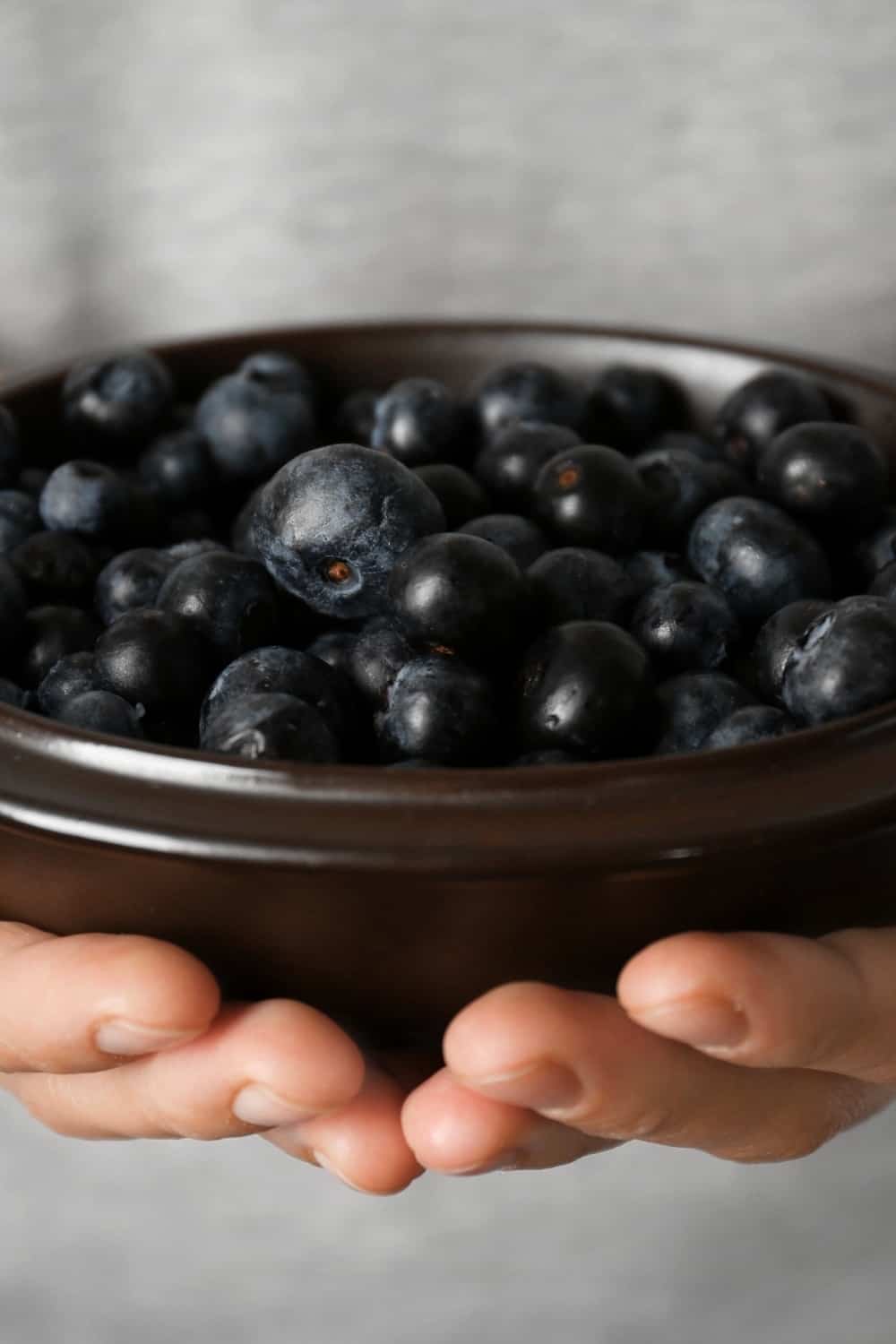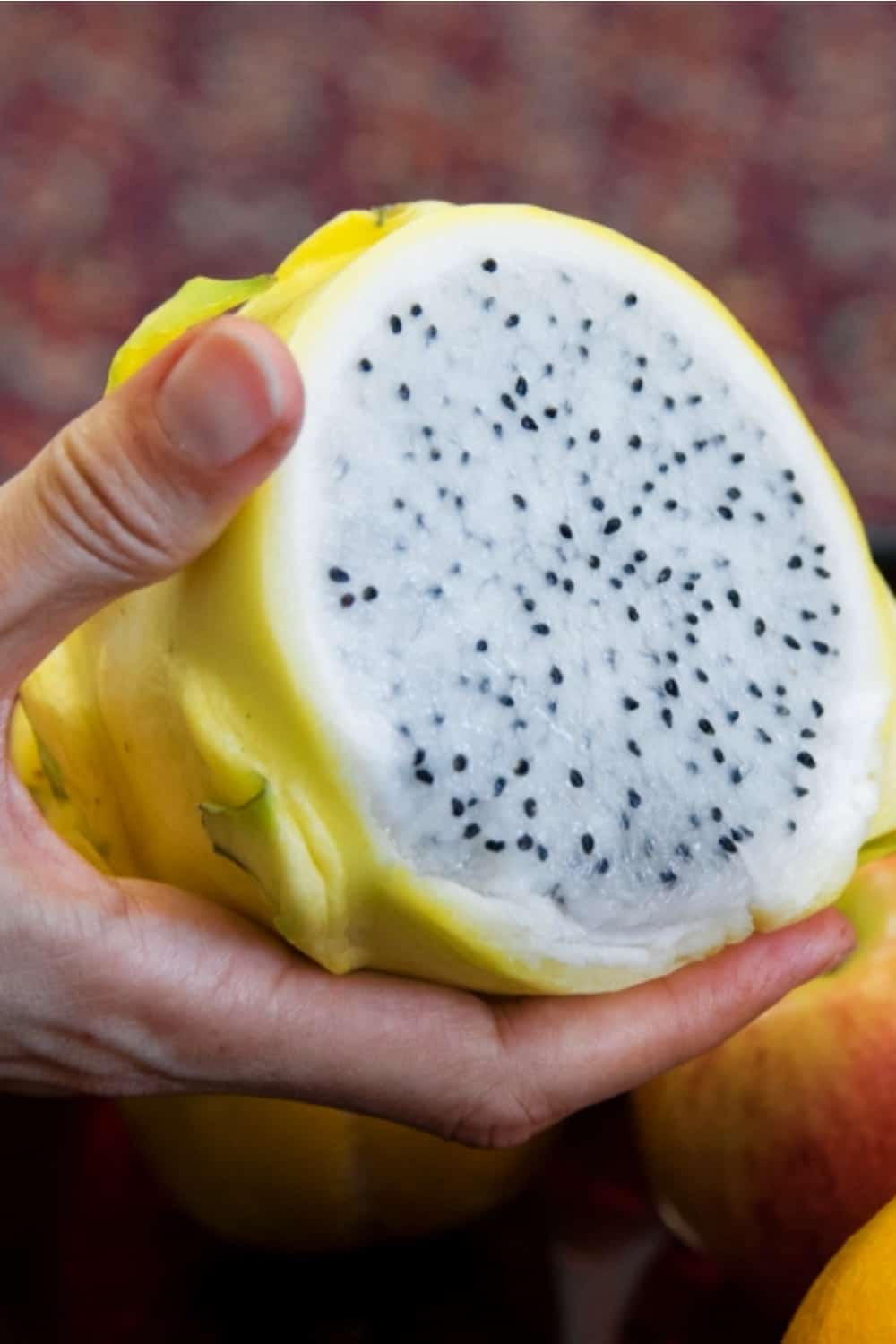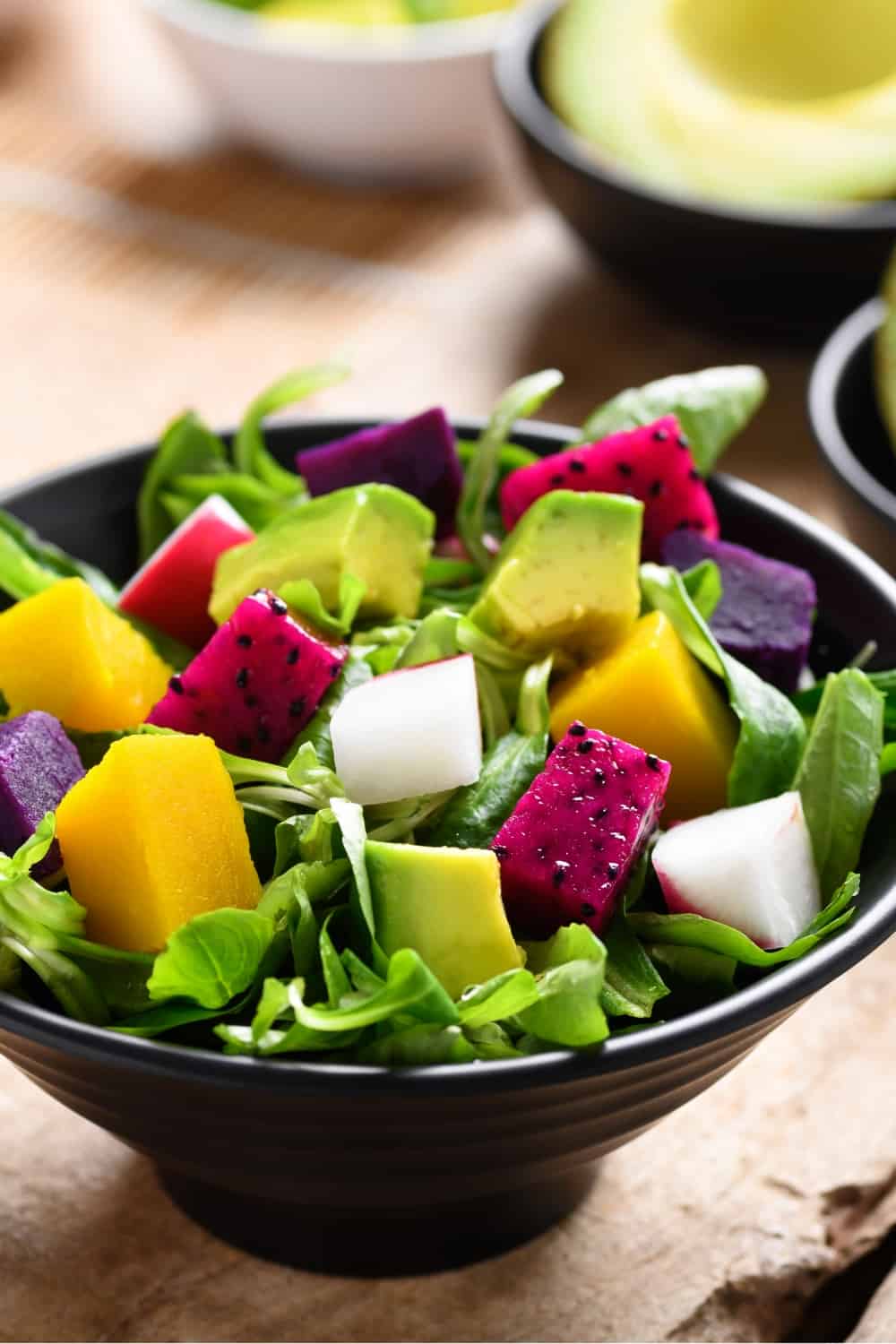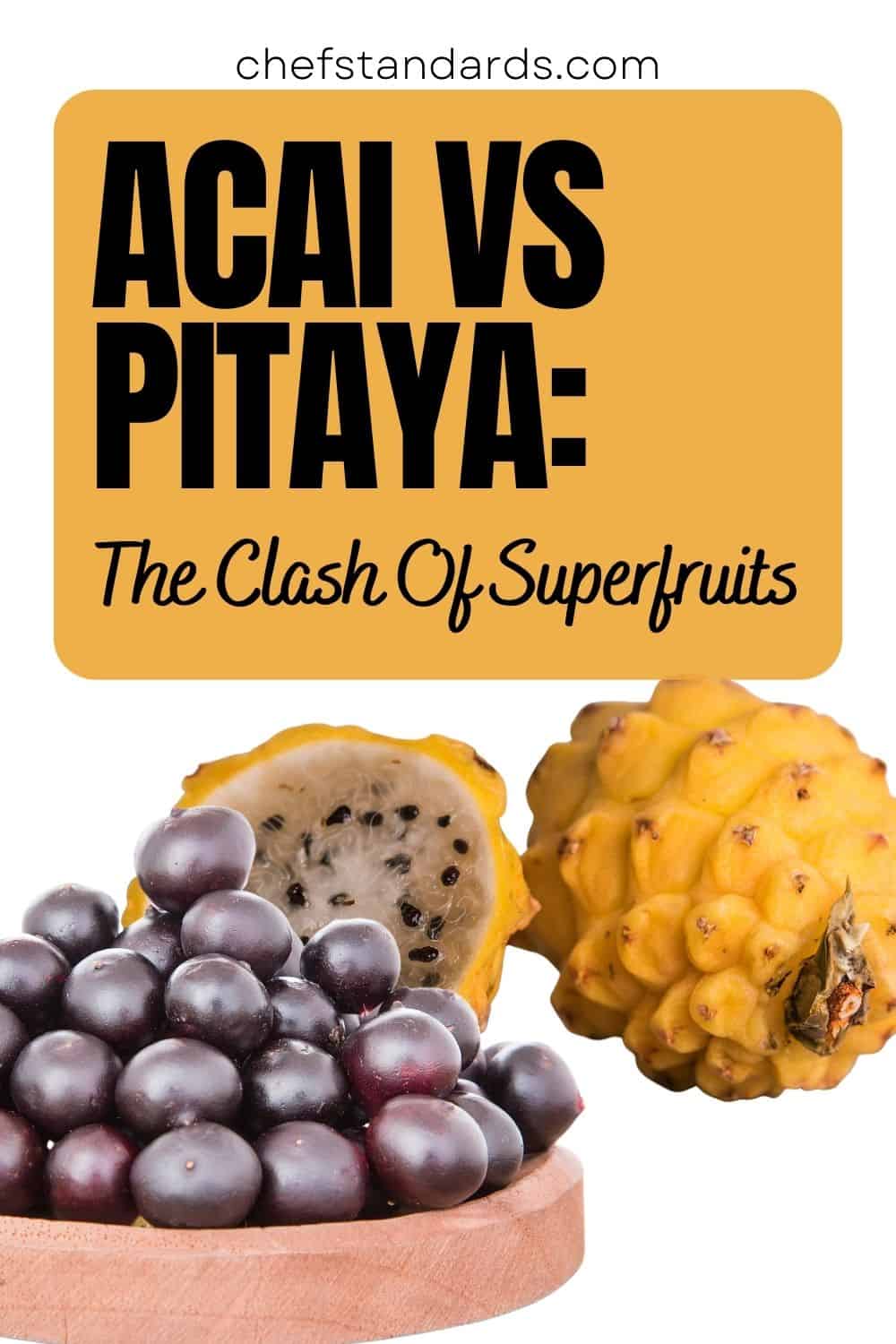Probably one of the biggest trends in the food industry nowadays is finding food packed with nutrients that will fit into your preferred diet and benefit your health in general.
At the same time, if you are able to find one packed with wonderful flavors, you are on top. The stars of the superfood world are definitely two exotic fruits known as acai and pitaya.
The first one is the Brazilian berry powerhouse that has taken the health food industry by storm and the other one is the exotic and vibrant dragon fruit from Southeast Asia.
Sometimes, it is not easy to distinguish these two exotic beauties, especially in terms of nutrition and health, but they have some main differences that need to be discussed.
So let’s see which one of these superfruits takes the crown.
[table id=25 /]
Acai Vs Pitaya: What Are They Exactly?
Before I go into their comparison in detail and some other questions related to these healthy gifts of nature, let’s see what they are exactly and what the true origin of acai and pitaya is.
Acai Breakdown

Although gaining popularity at a fast pace in many countries around the world, many people still wouldn’t know what you are talking about if you would ask them about acai.
It’s a different story with Brazilians because, in their country, it is one of the staple foods that can be found in restaurants, bars, food stores, and even in every house served alongside regular dinners in different shapes.
The main reason behind this is the fact that acai actually originates from the Amazon rainforest of Brazil, particularly in the northern region of the country.
There, it has been used for its nutritional and medicinal properties for centuries. It was relatively unknown in other parts of the world until the 1970s when it started gaining popularity in North America and Europe.
Acais are actually berries that grow on tall palm trees, i.e. in clusters at the top of tall Acai palms.
They can grow from 15 meters up to 30 meters in height and have long, slender trunks with fronds that can grow up to 3 meters in length.
Aside from Brazil, this big tree is also usually found in Peru and in some other South American countries.
Pitaya Breakdown

I am sure that many of you know it by the name “dragon fruit” and yes, this fruit that starts with P is actually dragon fruit.
Just like acai, pitaya is a tropical fruit that is native to Central and South America. It has a long history.
However, pitaya already gained popularity in some Asian countries in the 13th century. Some of those countries include Thailand, Vietnam, and the Philippines.
It is also grown there due to the warm climate, as well as in some other subtropical regions around the world, including Australia, Israel, and parts of America.
Before gaining worldwide popularity, dragon fruit was the main ingredient of traditional Chinese medicine, where it was used for its cooling properties and as a cure for conditions such as diabetes and high blood pressure.
I also have to emphasize that, unlike acai, pitaya grows on the climbing cactus, also known as the pitaya plant.
It is a member of the genus Selenicereus or Hylocereus and, in ideal conditions, it can reach heights of up to 6 meters.
Ideal conditions for pitaya plants include a warm and humid climate, a well-drained soil mixture, and a lot of water.
See Also: 100 Foods That Start With D (From Dim Sum To Dacquoise!)
The Looks Of Two Beautiful Fruits
I won’t go into too many details about the appearance of these two fruits, but I will say just a few important things because, after all, you want to know how they look to spot them at the grocery store.
Acai Looks

As you already know, acai is a berry that looks somewhat like a grape.
It is round in shape and small in size. If you ever find them fresh, you will notice a dark purple-black color and a shiny, smooth exterior.
Inside the fruit, you will find flesh that surrounds a large seed. However, since they tend to go bad very quickly, you will usually find them powdered, pureed, or incorporated into juice.
How Different Is Pitaya?

When it comes to pitayas, it is important to know how they look because they can be found fresh on the shelves of grocery stores.
In general, they are larger and more oblong in shape. If ripe, they have a bright or yellow exterior with green, spiky scales. Its flesh is full of small black seeds.
If you notice that the skin is still green, it means that it is not ripe yet. I also have to emphasize that splotches or bruises on the surface of pitaya are the main sign of overripe ones, so avoid those as well.
Calories And Nutrition Facts Of The Two Superfoods
Finally, here is the part that, I believe, you are mostly interested in. And the reason is obvious. Besides their flavor profile, their nutrition and health benefits are the main reasons for their popularity.
Let’s look at their rich nutritional profiles for a 100-gram serving of acai and pitaya (about half a cup), in the table below.
[table id=24 /]
As you can see, there is not much difference between acai and pitaya when it comes to their main nutritional information.
The only significant difference lies in the fact that acai lacks sugar. So, if you are on some kind of sugar-free diet, your choice will definitely be acai over pitaya.
Also, acai contains a certain level of fats, unlike pitayas which have zero grams of fats. However, 5 g of fat is really insignificant and won’t make a huge difference.
Different Health Benefits They Offer

As they have a similar nutrition profile, these two superfoods are both similarly healthy and contain almost the same vitamins and minerals.
However, there are differences in the amount of those nutrients, so one fruit is slightly better for some health problems than the other. It is not out of hand to know that.
In order to have a better picture of the differences between these two superfruits in terms of their nutritional value (vitamins and minerals) for 100 grams (½ cup acai and pitaya), below is the table that shows the exact information.

Now let’s see what this means in terms of health benefits (including the influence of fiber and antioxidants as well).
• Antioxidants: Both fruits contain fair amounts of antioxidants and they are famous for that in the health world.
Acai is rich in phenolic compounds such as anthocyanins and proanthocyanidins, as well as plant pigments that give it its rich purple color and amazing antioxidant properties.
According to a pilot study done in 2015 about the effects of supplementation with acai (1), acai supplementation led to a marked increase in the total antioxidant capacity.
Pitaya, on the other hand, also contains phenolic compounds such as flavonoids, betacyanins, catechins, and anthocyanins.
These phenolic compounds are known for their ability to fight free radicals, as well as for their antibacterial, antiviral, and antifungal properties.
Since they fight free radicals, they can also be beneficial for some health conditions like cancer, diabetes, and Alzheimer’s disease.
• Fiber: Both fruits have the same amount of fiber. Fiber is mostly known for its ability to improve gut health and digestion.
It also slows down the absorption of sugar in the body, which makes it a beneficial nutrient for people who suffer from Type 2 diabetes, as well as metabolic syndrome.
A study on the effects of red pitaya juice supplementation done by a group of researchers in 2014 (2), led to the conclusion that red pitaya juice may serve as complementary therapy for attenuating some signs of metabolic syndrome.
However, take note that pitaya has a higher amount of sugar, so acai will be more suitable for people who have problems with blood sugar regulation.
• Vitamin A: Both fruits contain vitamin A. However, acai has higher levels of vitamin A.
Vitamin A is beneficial for the immune system, normal vision, bone growth, and development, as well as heart and lung health.
So if you are after these benefits, it is best that you choose acai.
• Vitamin C: Both fruits contain certain amounts of vitamin C. But, acai has a higher amount of this vitamin.
Therefore, if you are trying to boost your immunity, improve heart health, and manage high blood pressure, it is better to consume acai.
• Calcium: It is another very important nutrient for our health.
Both acai and pitaya have certain amounts of this mineral that is very beneficial for strong bones, as well as the heart, muscles, and nerves.
Acai contains slightly more calcium.
• Iron: The recommended daily dose of iron is around 11.5-13.7 mg. In 100 g of acai, the iron content is 1.08 mg, and just 0.8 mg in 100 g of pitaya. It is not much, but it is better than nothing.
Your body needs iron for growth and development. It also uses it to produce hemoglobin, the main part of your blood cells, and to make certain hormones. It is certainly a very important nutrient for overall health.
• Magnesium: And here is the one important mineral that acai lacks and pitaya doesn’t. 100 g of fresh pitaya contains around 40 mg of magnesium.
I have to say that 40 mg of magnesium is not enough for the daily recommended intake, which ranges from 300-400 mg, but it is better than nothing.
Magnesium is such an important mineral and it can benefit your skin, brain, heart, muscles, bones, and almost every cell in your body.
At the end of the day, both fruits can offer a lot of different health benefits. However, I would give acai a slight advantage simply because it has zero sugar and because it is higher in vitamins A and C, two vital nutrients for our health.
Differences Between Two Unique Flavor Profiles
Although they have similar nutrition profiles, the same can not be said for the flavor profiles of acai and pitaya.
Acai Flavor Profile Debugged

To be honest, acai is not that popular for its flavor profile – mostly because of the absence of sweetness.
Acai’s flavor can be described as slightly tart with an earthy backbone, as well as notes of pomegranate, raspberry, and a pinch of dirt. It is also high in acidity to some extent.
It is believed that its earthy flavor comes from polyphenols, a natural compound also present in green tea and dark chocolate. That is why some people describe acai’s flavor as somewhat chocolaty.
Also, the texture of acai is grainy to some extent. However, pitaya is mostly blended and consumed in various smoothies, where it takes on a creamy, smooth texture.
Experience The Amazing Taste Of Pitaya

When it comes to pitaya, its taste is often described as a blend of pear and kiwi. Others say that it almost resembles the taste of watermelon.
In general, pitaya has a mild taste that is quite refreshing. Due to the higher sugar content, it is sweeter than acai. But, I have to emphasize that the level of sweetness depends on the exact type.
Pink or red-flesh pitayas are sweeter than the white-flesh varieties.
When it comes to texture, the fleshes of all types of pitayas are soft and juicy, with a slightly grainy texture due to the presence of small, edible seeds.
All in all, if you are looking for a sweet and soft fruit that you can enjoy fresh, pitaya will definitely be your choice.
I also have to say that pitaya provides an exotic component for the flavor profile of the Red Bull variety, known as The Green Edition.
Different Forms In Which You Can Find Them
As I already said, these two fruits can be found in various forms. So, let’s dive in and see what those forms are so that you can more easily find what you are looking for next time you head to the grocery store.
Pitaya Only
• Fresh Fruit: Unfortunately, you probably won’t be able to find fresh acai on the shelves of your local grocery store because acais are highly perishable.
But, fresh pitaya can certainly be found since it can last a week or two if stored at cooler temperatures, ideally in the refrigerator.
Both Acai And Pitaya
• Frozen Fruit: Both pitaya and acai can be frozen and they typically last for up to 6 months in the freezer if stored properly.
However, you will mostly find them pureed or in frozen smoothie packs in the freezer sections of grocery stores.
Sometimes, frozen cubed pitaya is also sold.
• Pitaya and Acai Juice: Juice made from one of these two fruits are quite popular in the US and it can be found at most grocery stores and supermarkets.
Unfortunately, many producers add various additives to these juices to make them last longer. Due to the lack of sweetness, various sweeteners are often added to acai juices.
If you want the healthier version of the juice, try to find it at your local health food store.
• Powdered Form: There are both powdered pitaya and acai and they can be found at most grocery stores in the United States.
They are made by freeze-drying the fruit, i.e. slicing it, freezing, and transferring it in powdered form inside the vacuum chamber.
All of the water content of the fruit is lost, but the nutrition and flavor are preserved.
Also, the product is quite shelf-stable, i.e., if stored properly, it can last for long periods of time.
Exciting Ways To Use Acai And Pitaya
Finally, besides nutrition and health benefits, exciting ways to make your acai and pitaya more flavorful and enjoyable are definitely at the center of this article.
There are numerous ways to do that and some methods work better for pitaya while others are more suitable for acai. So let’s see what those methods are and how you can incorporate them.
Acai Uses

I will start with acai.
This fruit finds its ideal place in sorbets. Refreshing frozen desserts can be a great healthy alternative to ice cream.
Since you can find frozen acai puree at most grocery stores, you can always make yourself this refreshing dessert by adding a little juice and healthy sweeteners like honey or agave syrup.
Aside from sorbets, due to their medicinal purposes, acai is used for making beneficial acai supplements which are perfect for improving the immune system, digestion, skin health, etc.
Some popular brands that produce acai supplements include:
• Navitas Organics
• Amazon Therapeutics
• Solgar
• Terrasoul Superfoods
Pitaya Uses

Let’s talk about pitaya uses. This healthy fruit can be enjoyed on its own due to its sweet flavor and smooth texture.
But, it can also be added to various types of salads.
Salads made from avocado or mango are perfect for adding a few slices of pitaya for extra color and nutrition. Another popular salad that you can enrich with a few slices of pitaya is quinoa salad and this one is a true health powerhouse.
Unlike acai, pitaya is also a popular part of many cocktails, providing them with a unique twist of flavors, color, and nutrition.
There are endless ways to experiment with pitaya when it comes to adding them to cocktails, but some of the most popular include Pitaya Margarita, Pitaya Sangria, Pitaya Colada, and Pitaya Mojito.
Use Them Both
Finally, the two best ways to use both of these fruits are in smoothies and bowls. Acai smoothies are usually a blend of acai and other fruits, liquids, as well as sweeteners to add the desired sweetness that acai lacks.
Pitaya smoothies are a combination of fresh and frozen pitaya, other fruits, and liquids such as milk, juice, or coconut water. There is no need for sweeteners due to the fruit’s natural sweetness.
And, of course, there are popular pitaya and acai bowls which are mostly used as a nutritious breakfast option, but they are also great as a snack or dessert.
They can be combined with almost any of your favorite fruits, and topped with granola, nuts, and other toppings.
In the video below, you can see how to make one of the most popular and healthiest bowls out there, the acai bowl.
[sp_easyaccordion id=”4794″]


